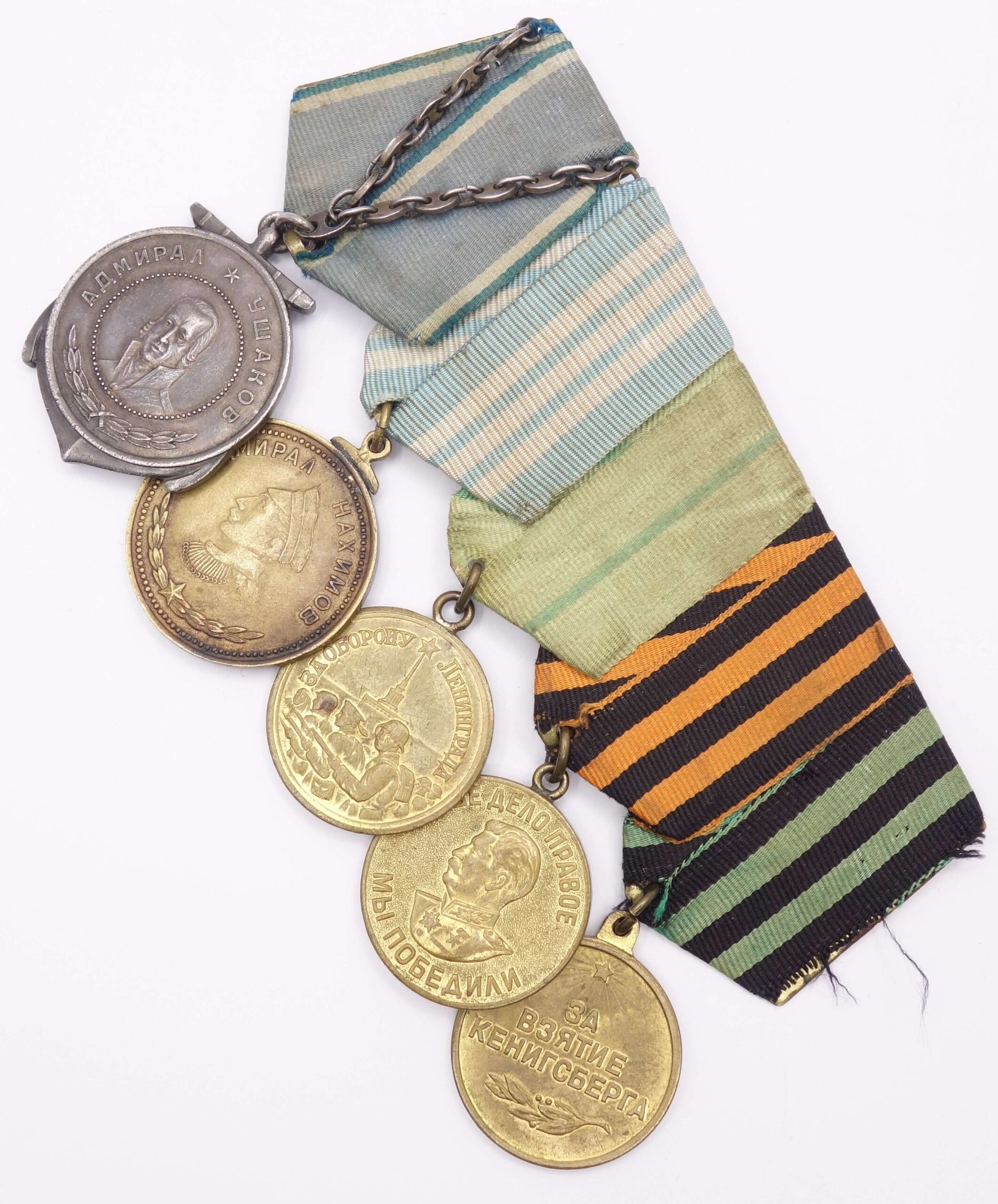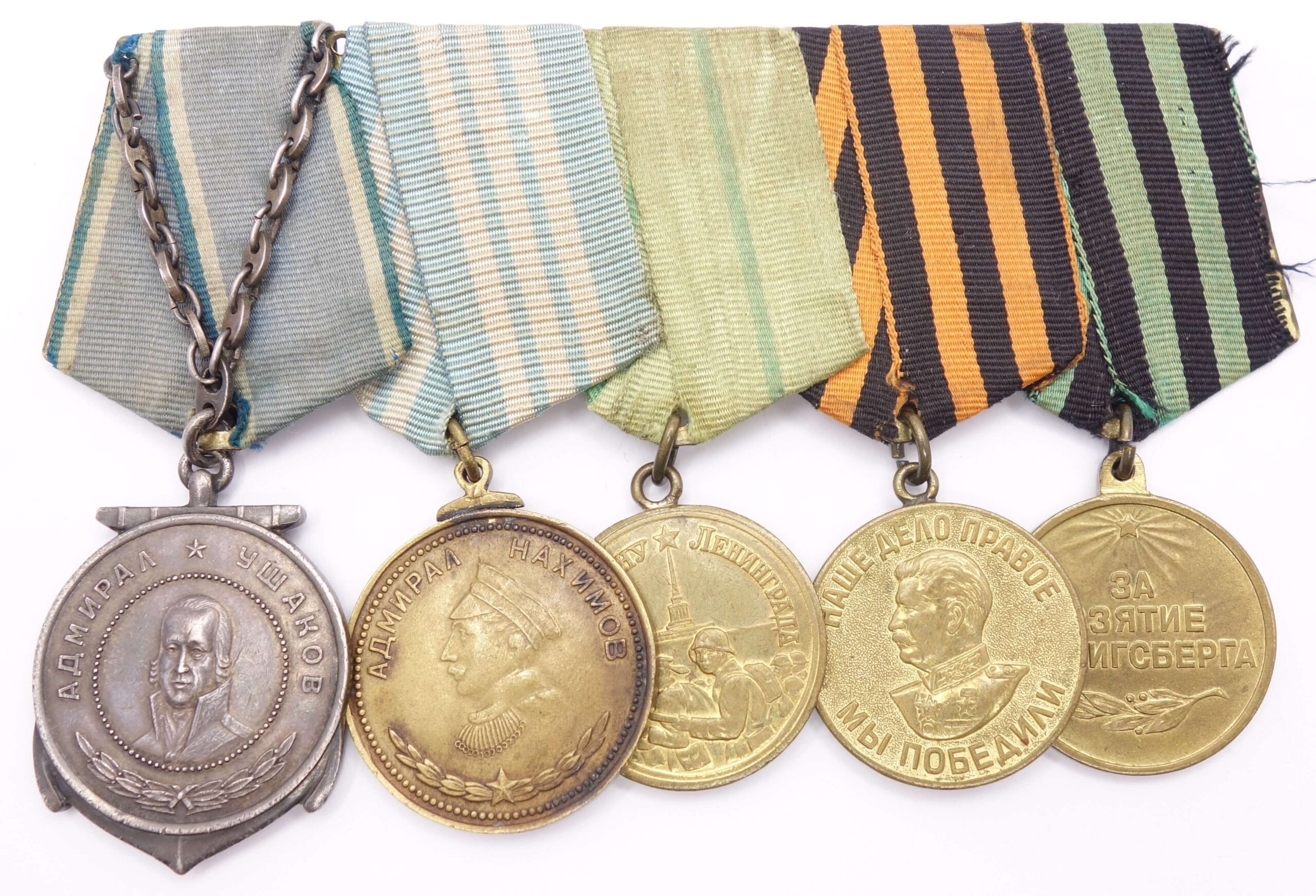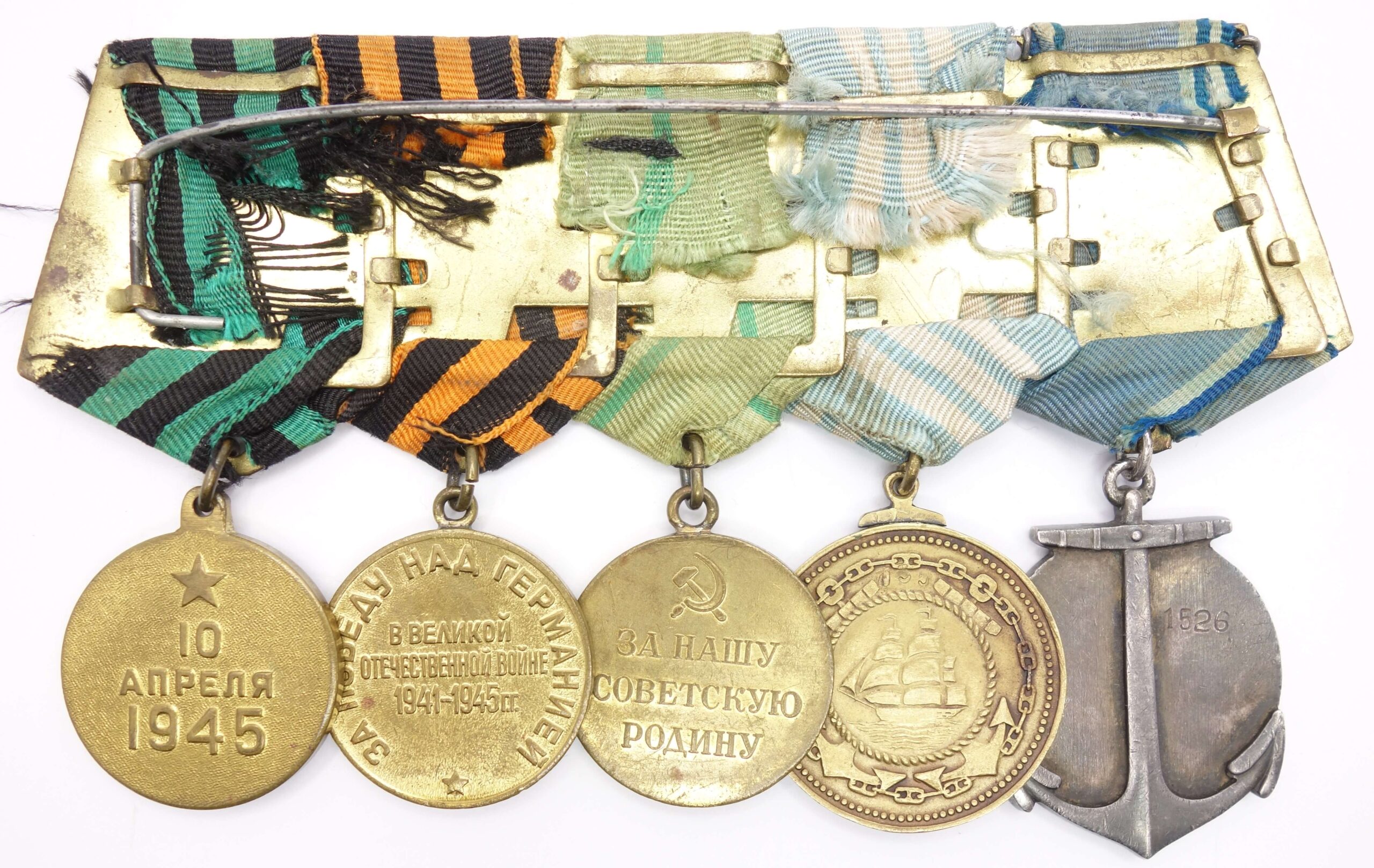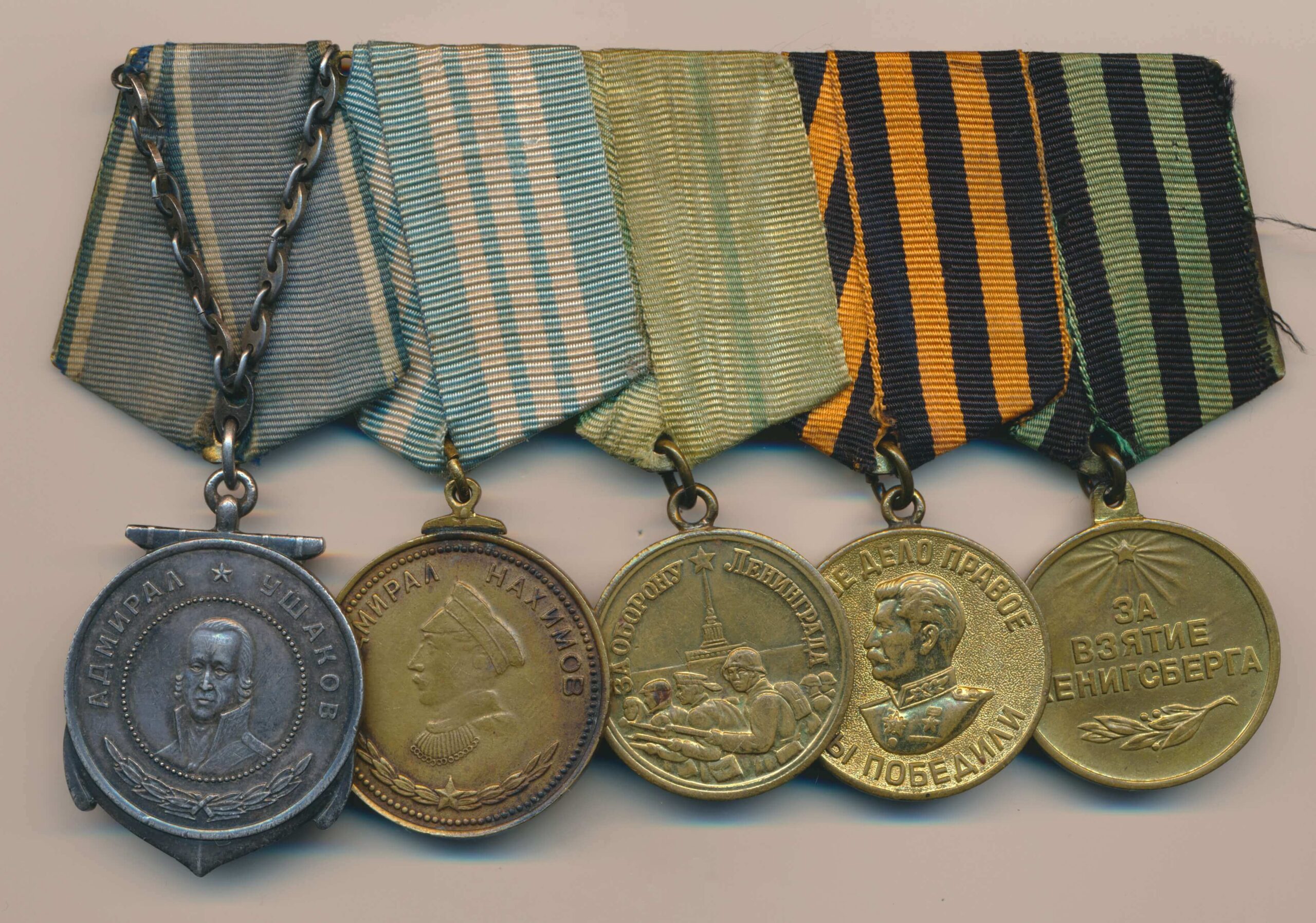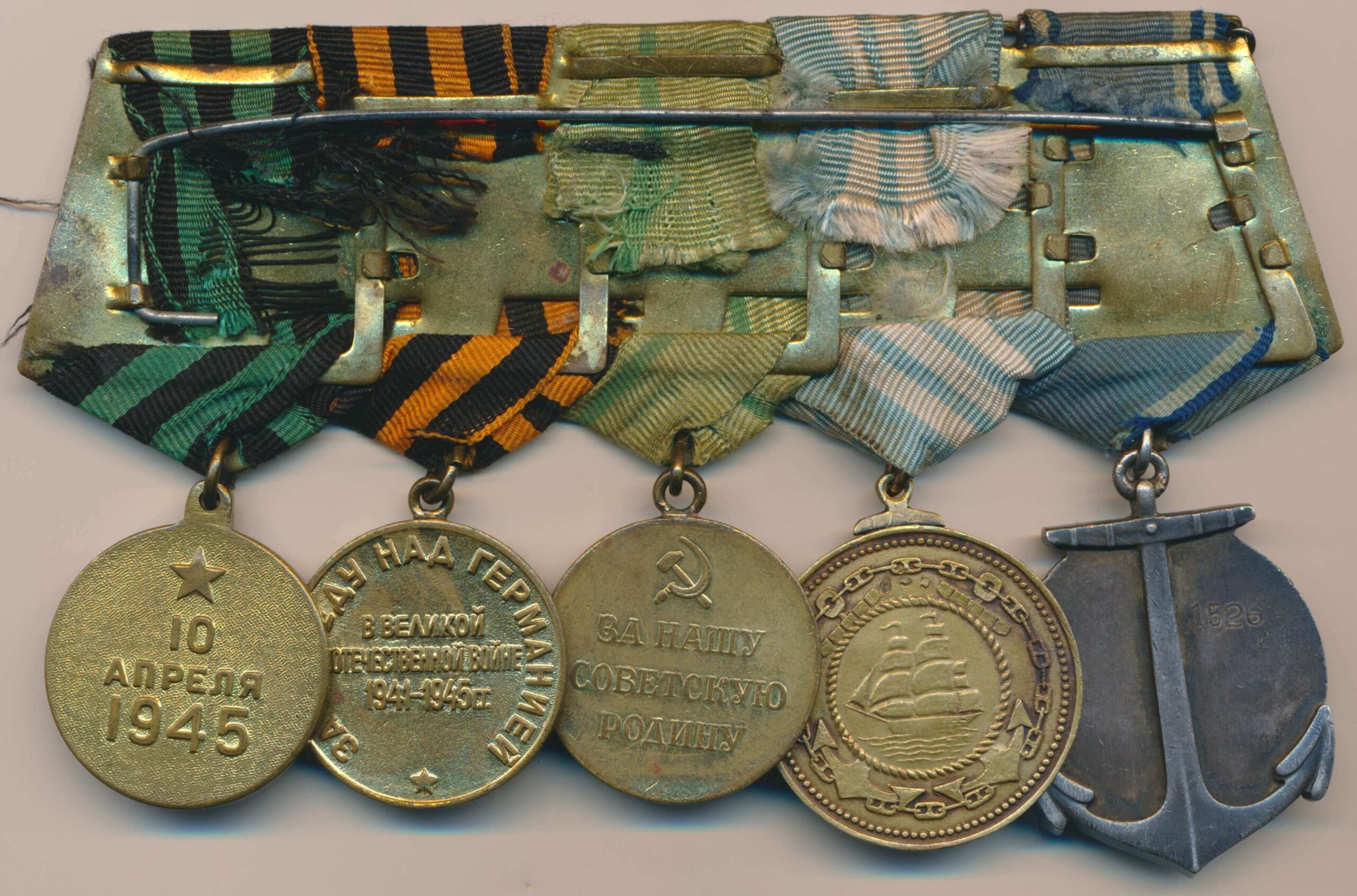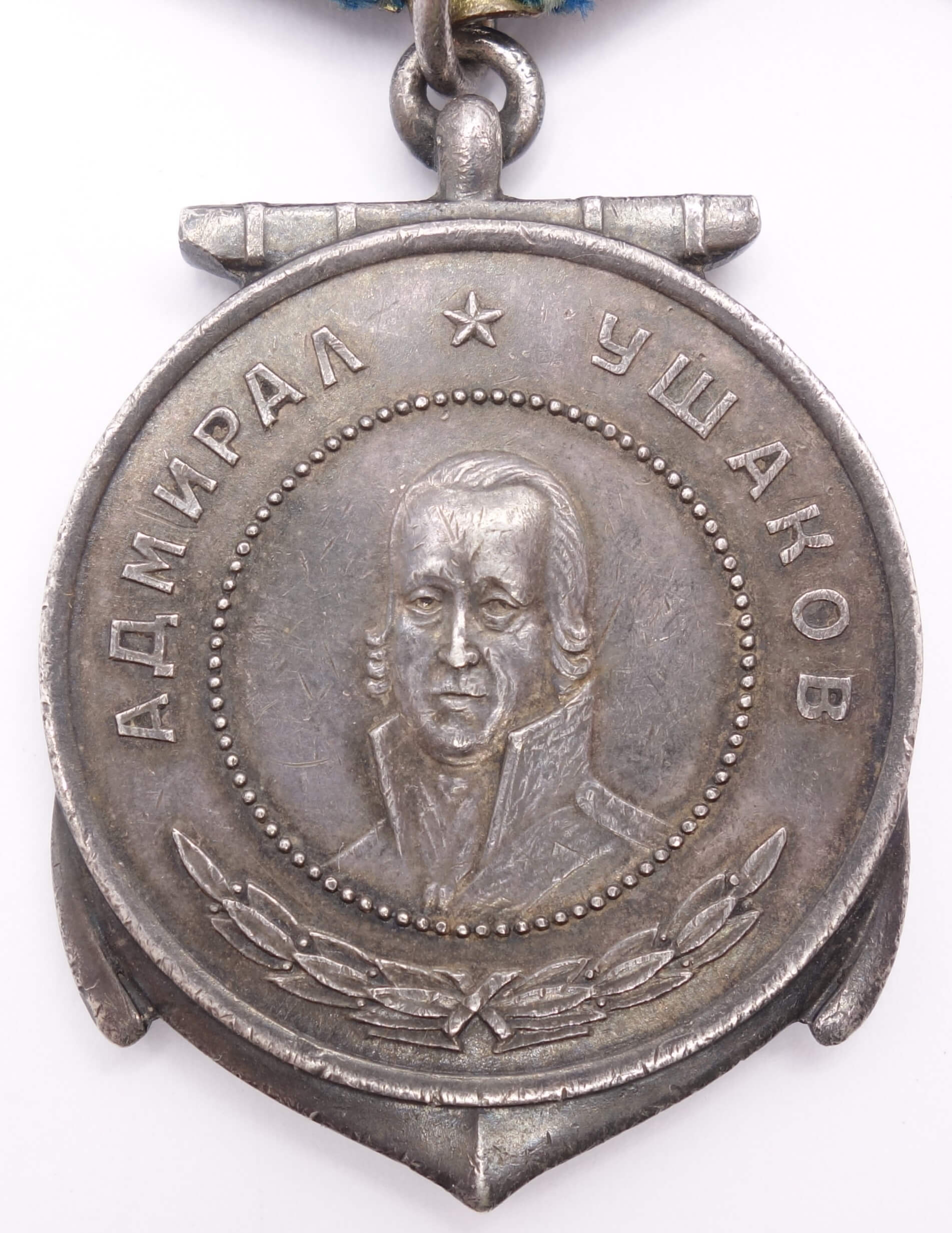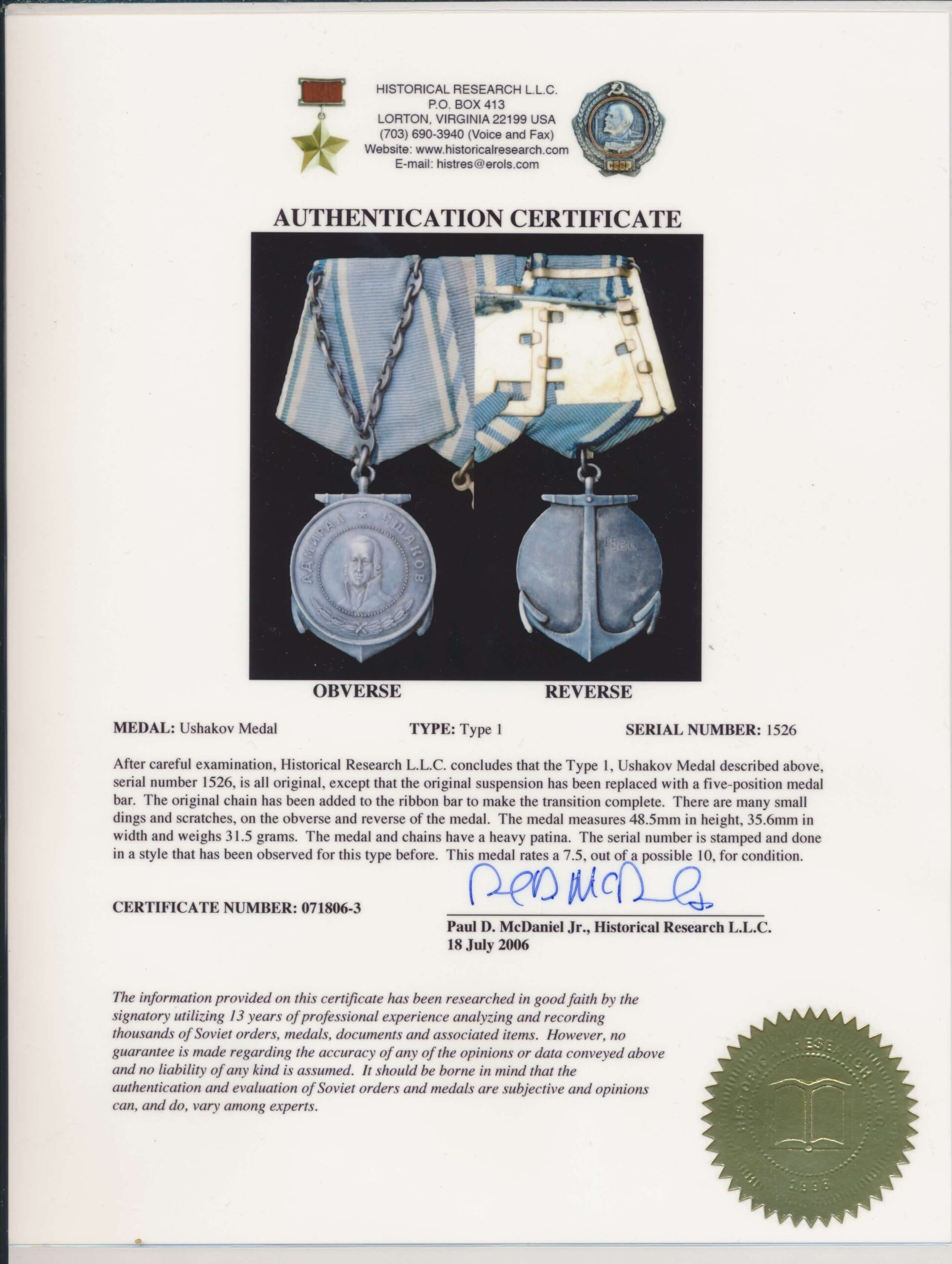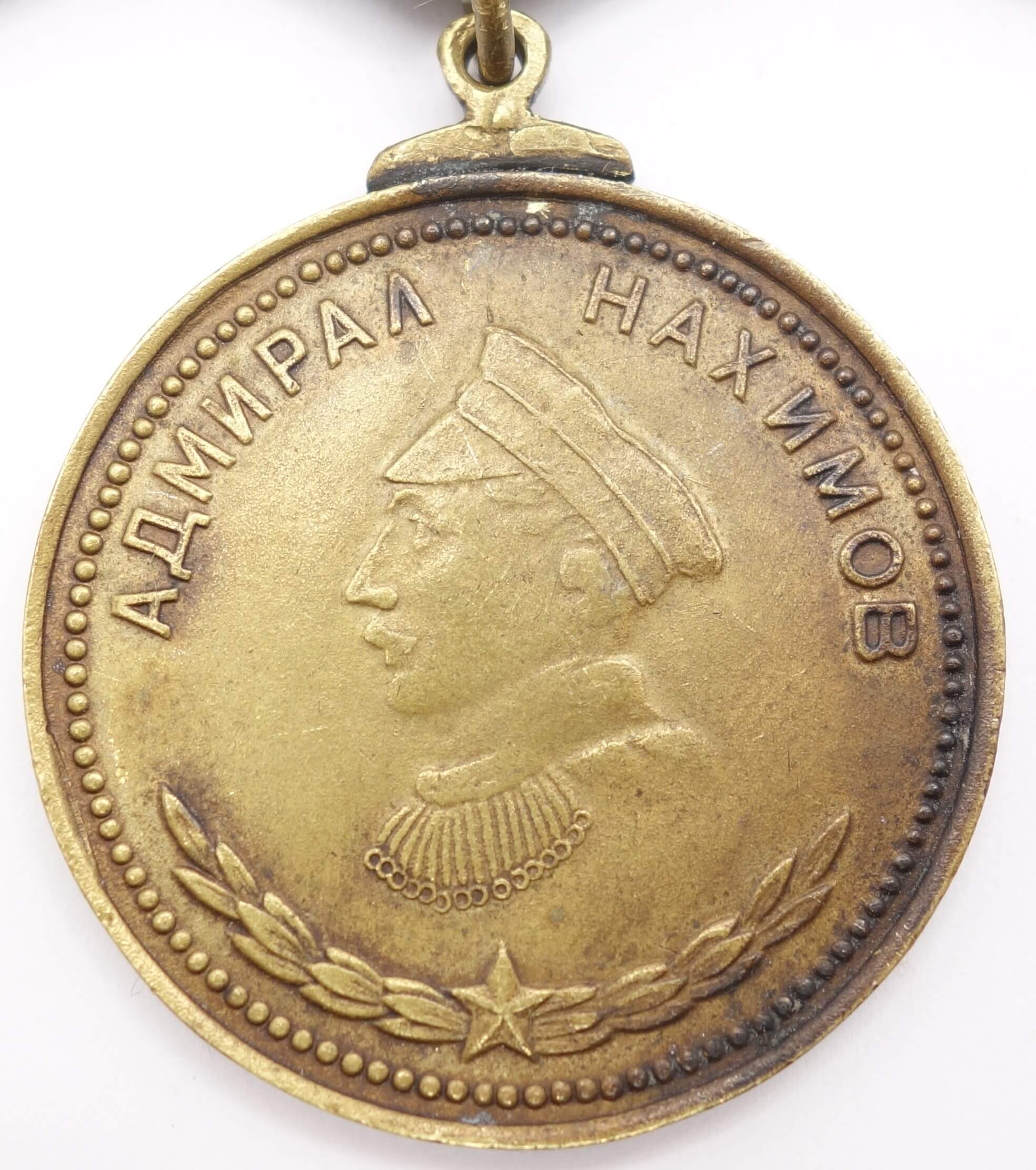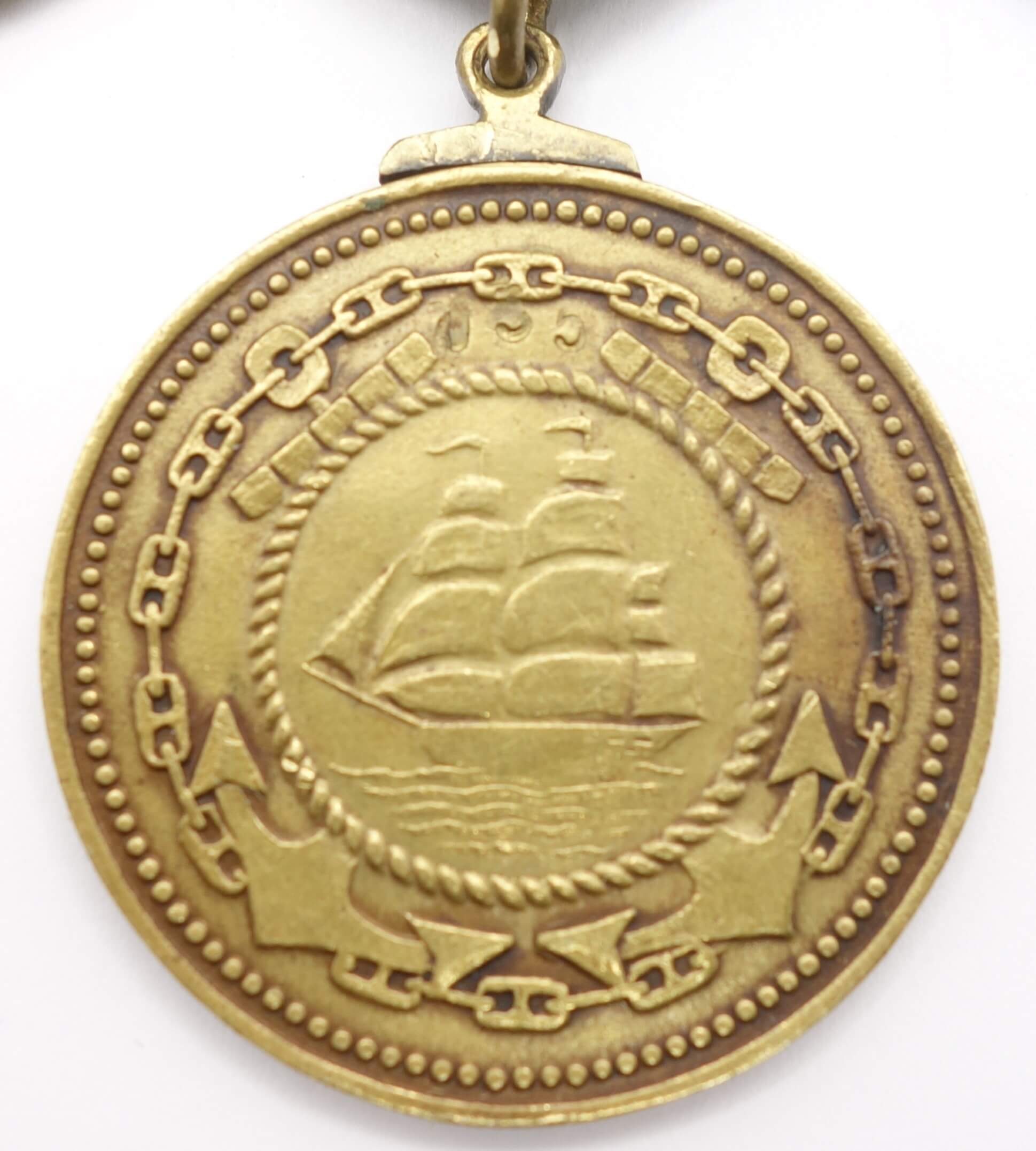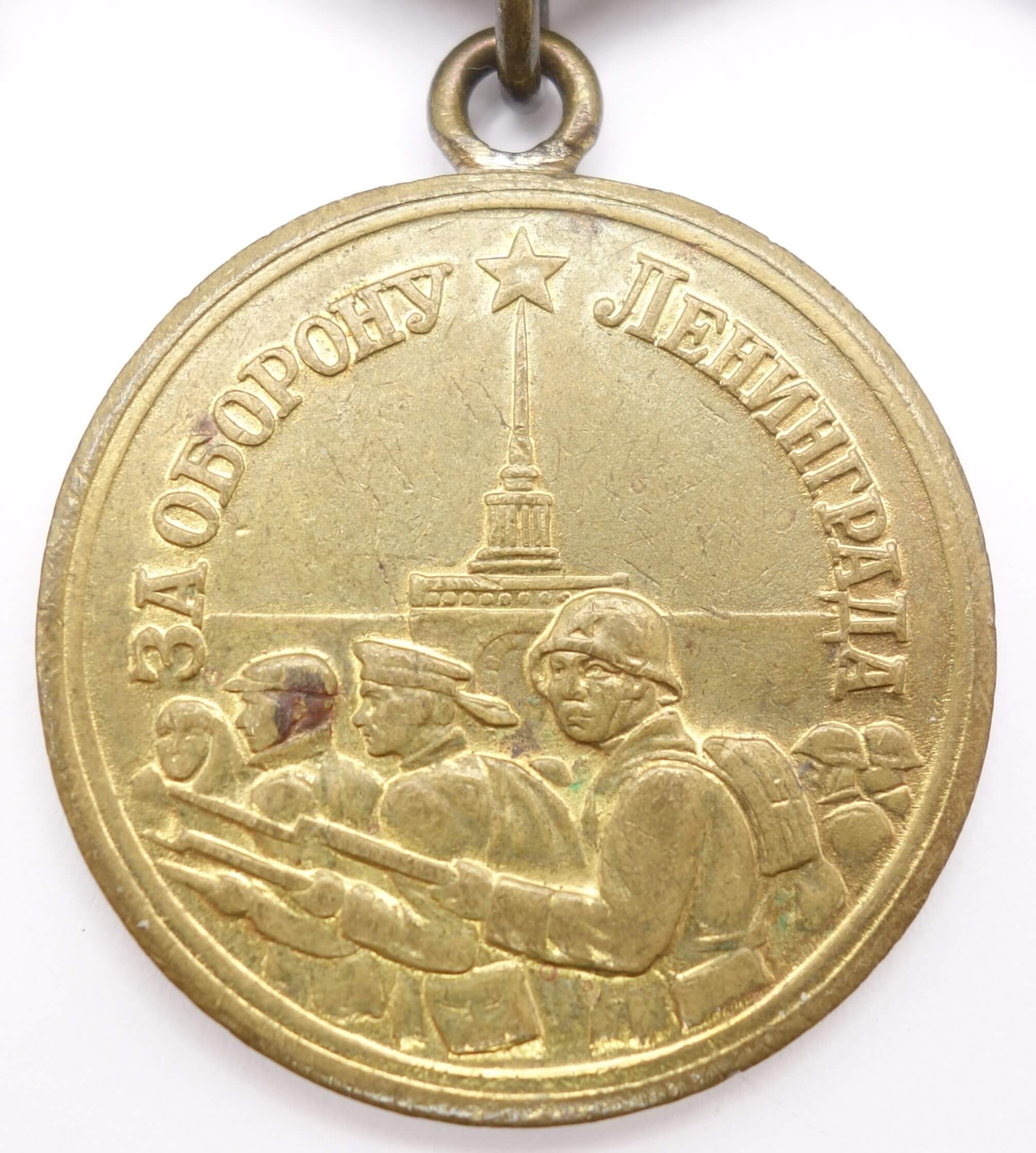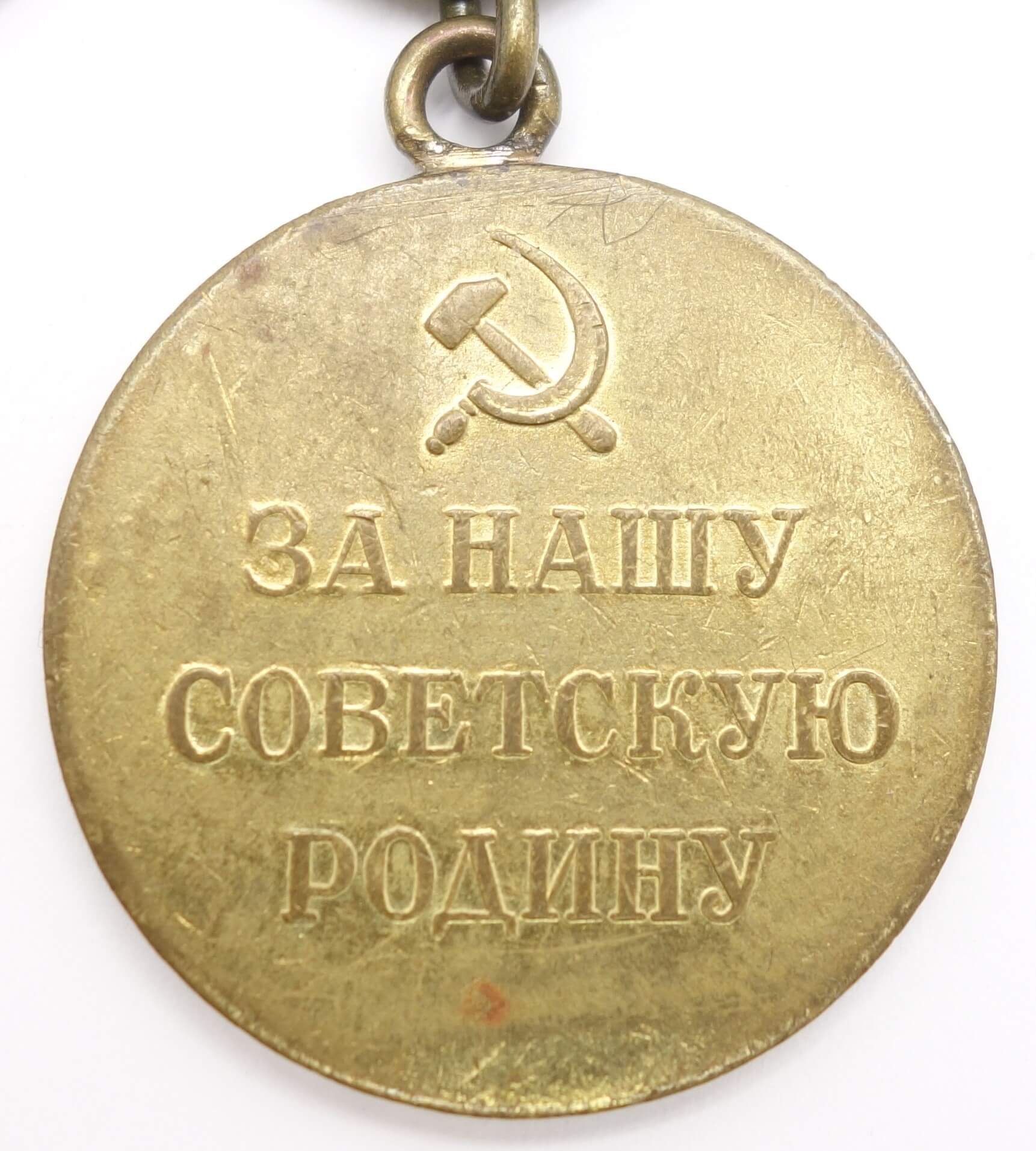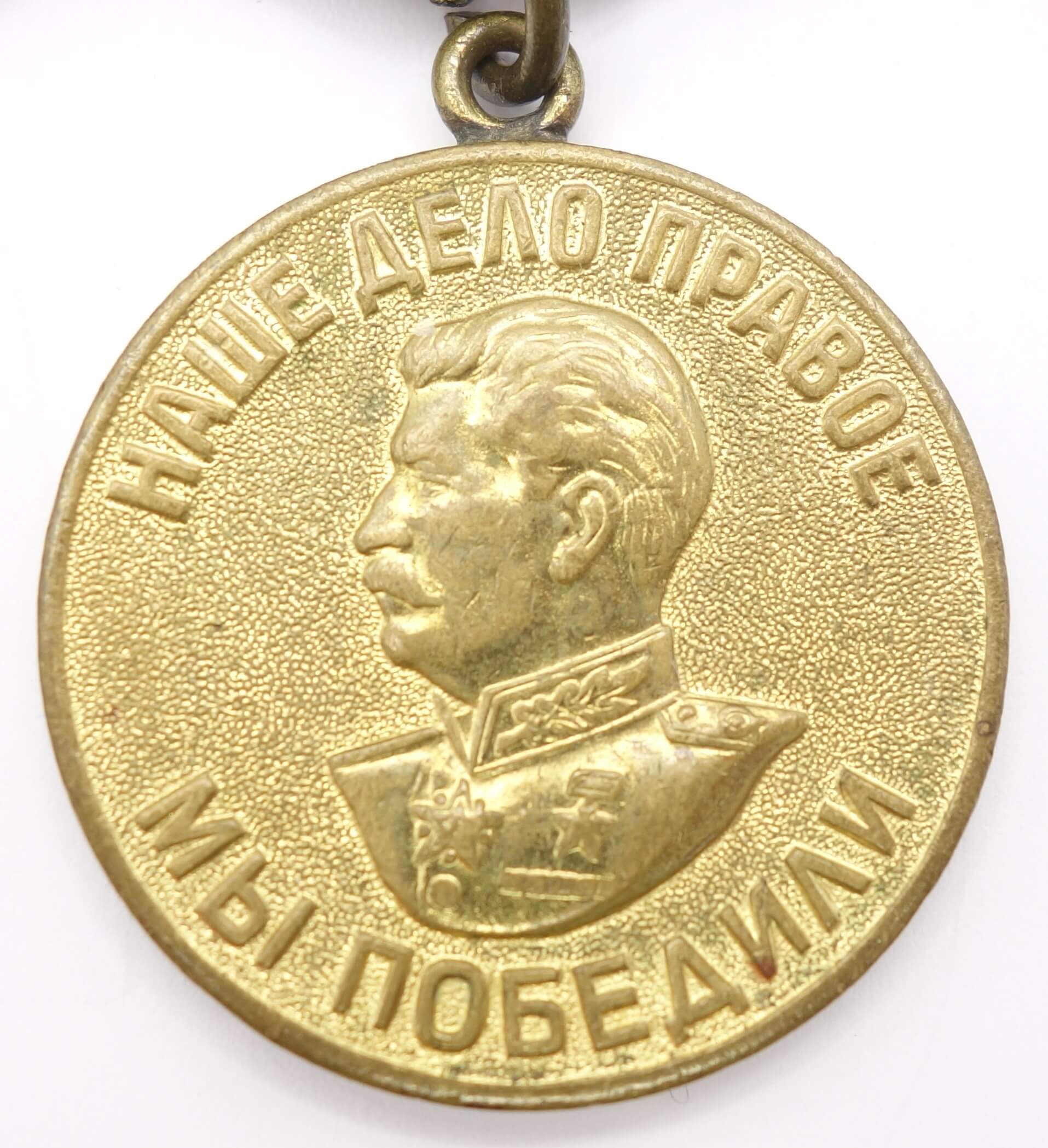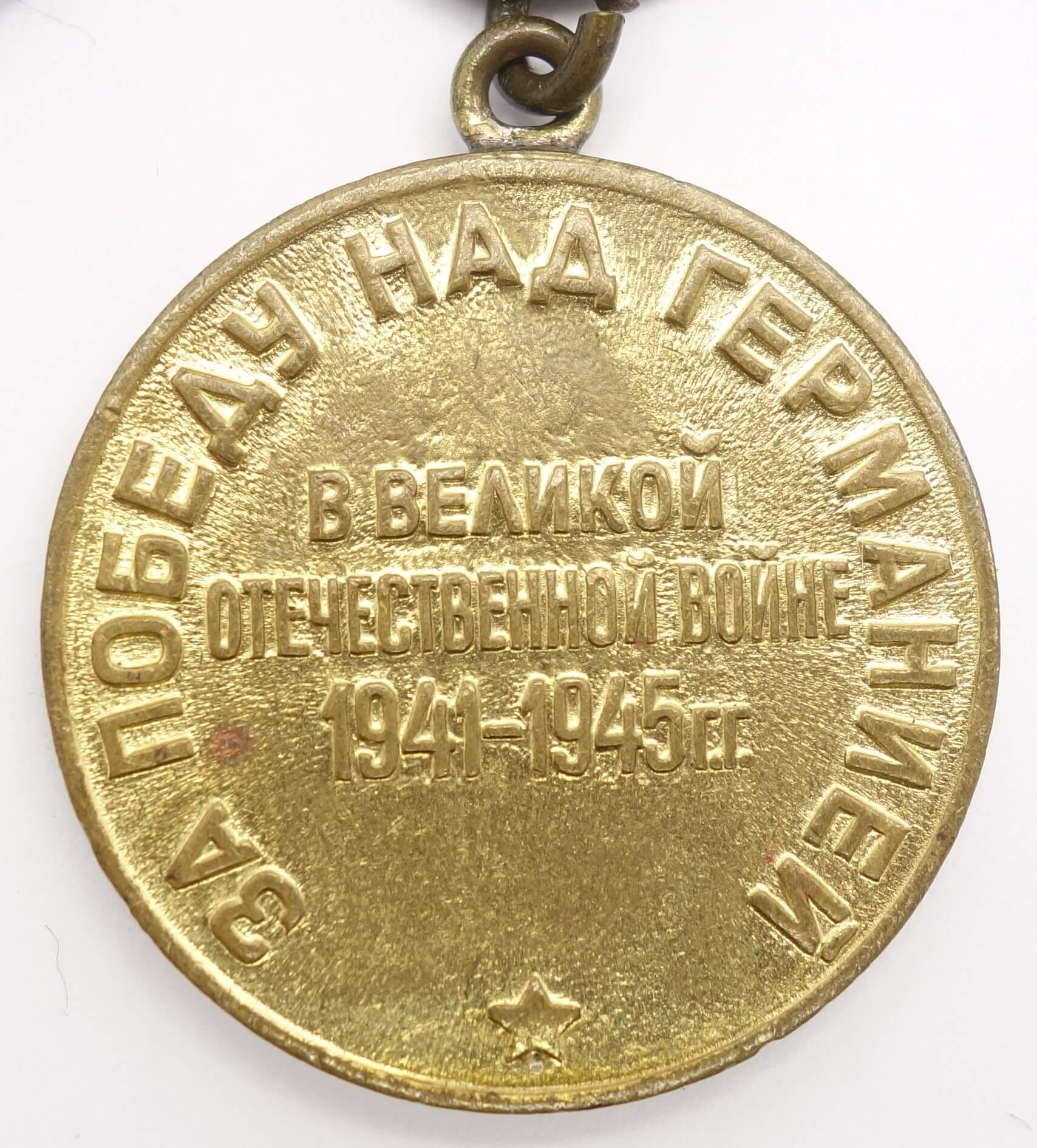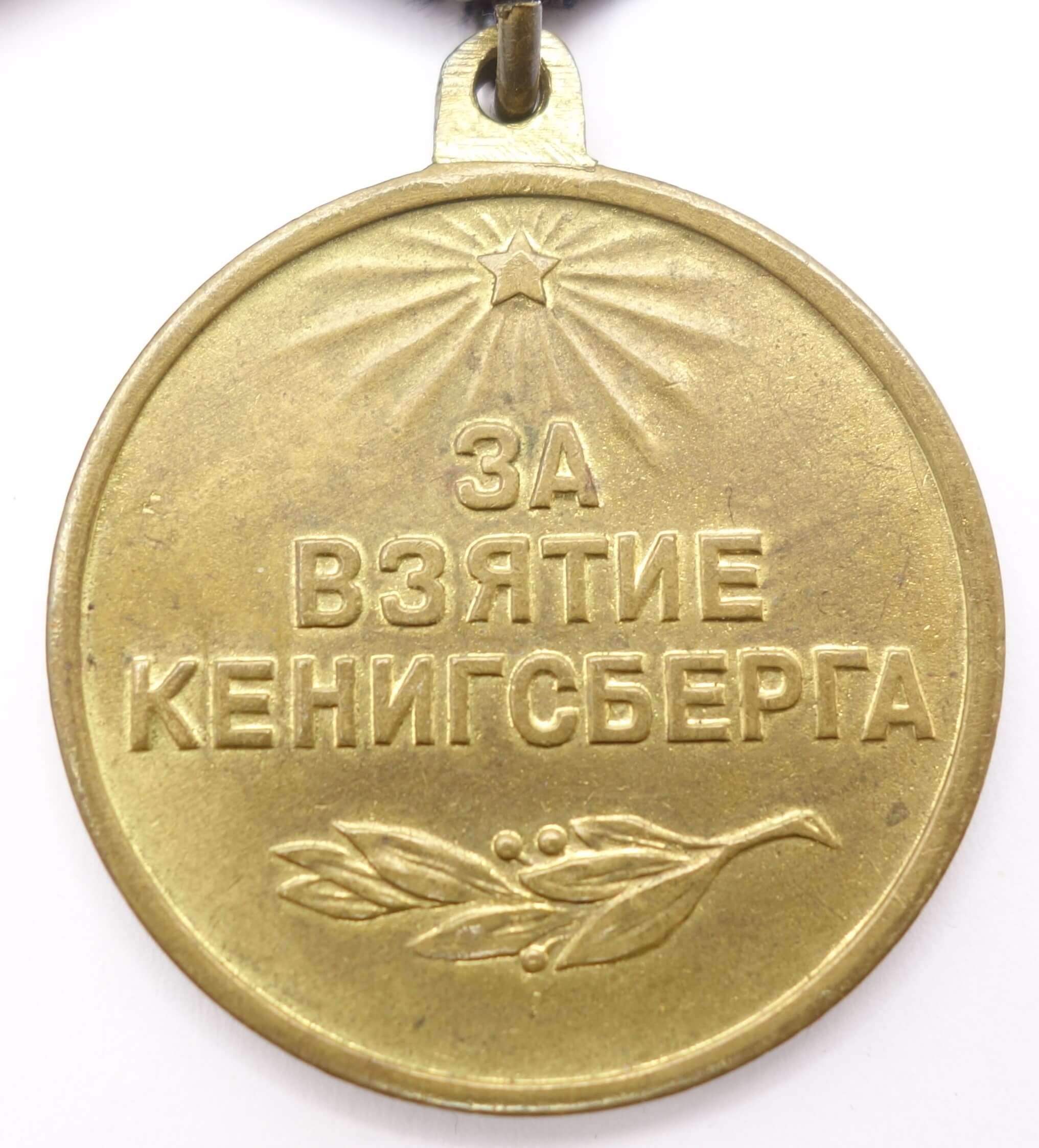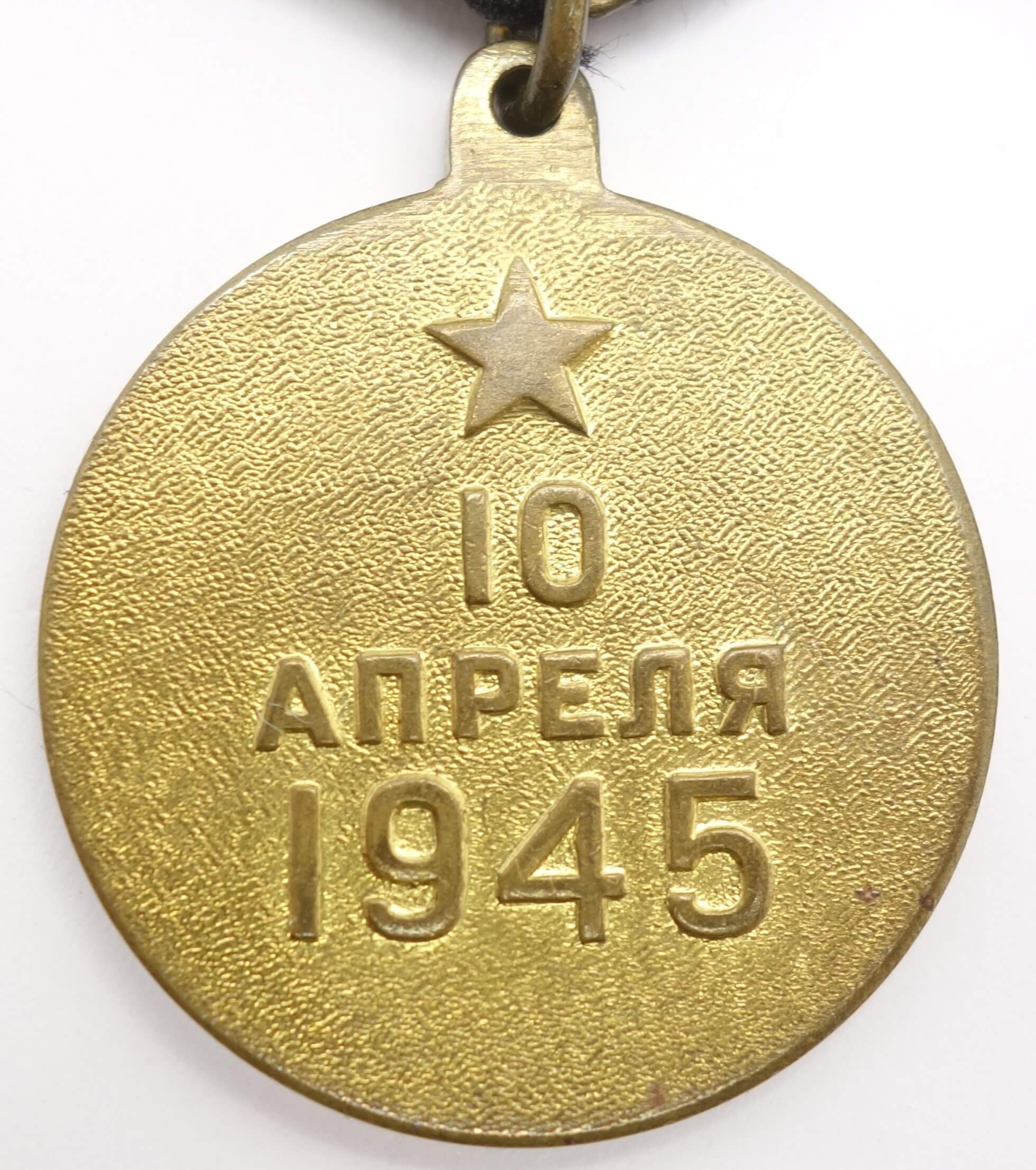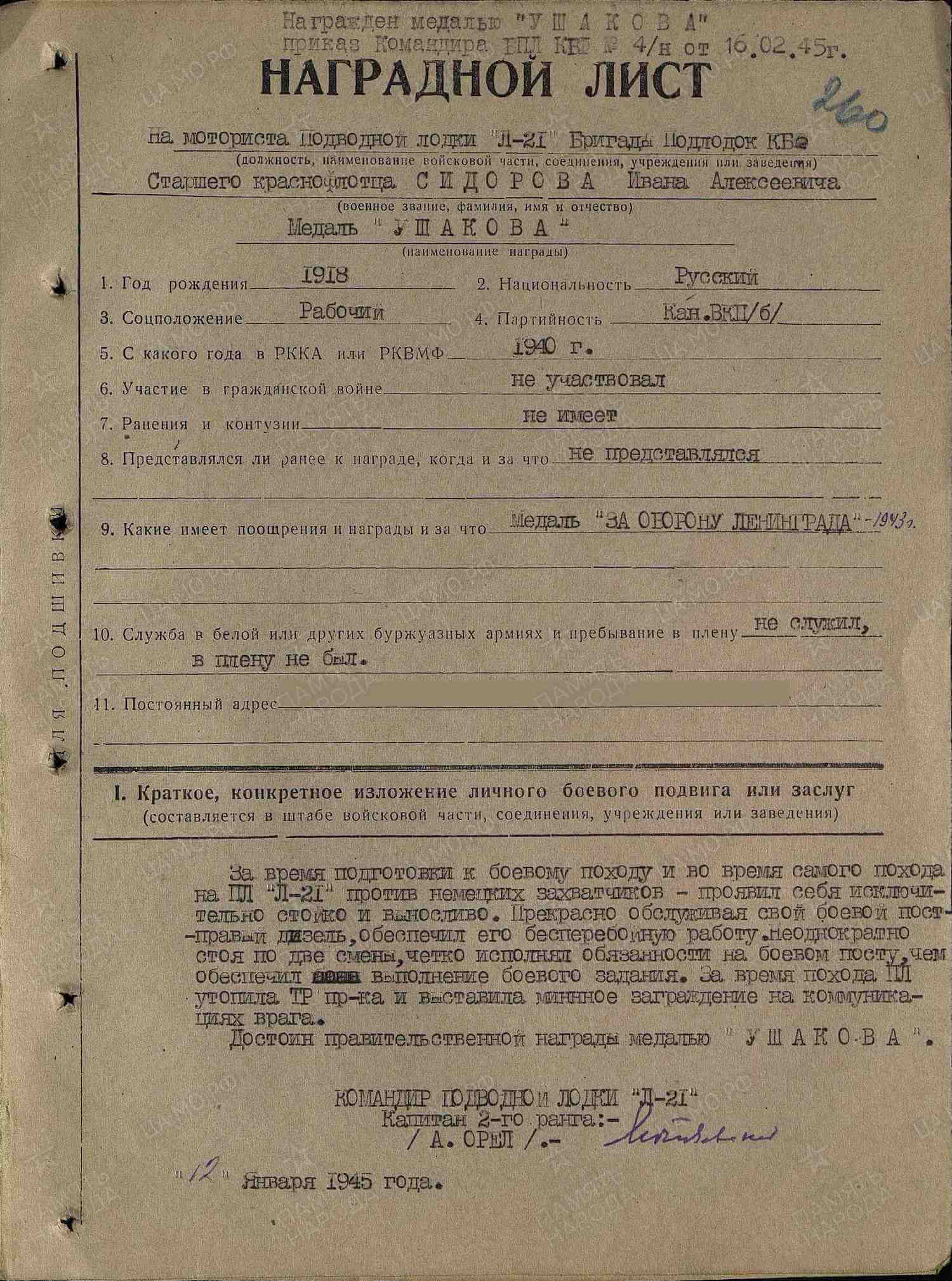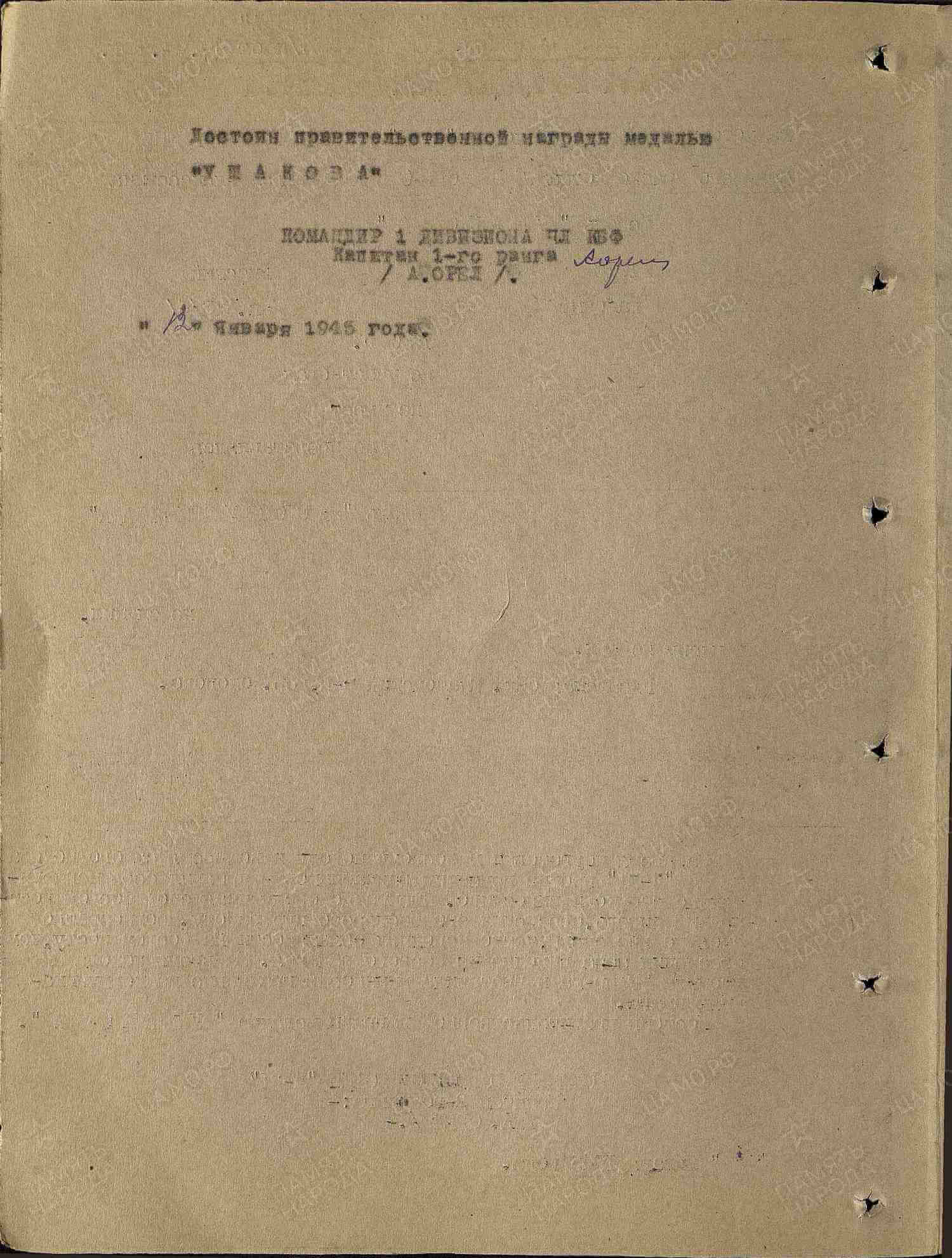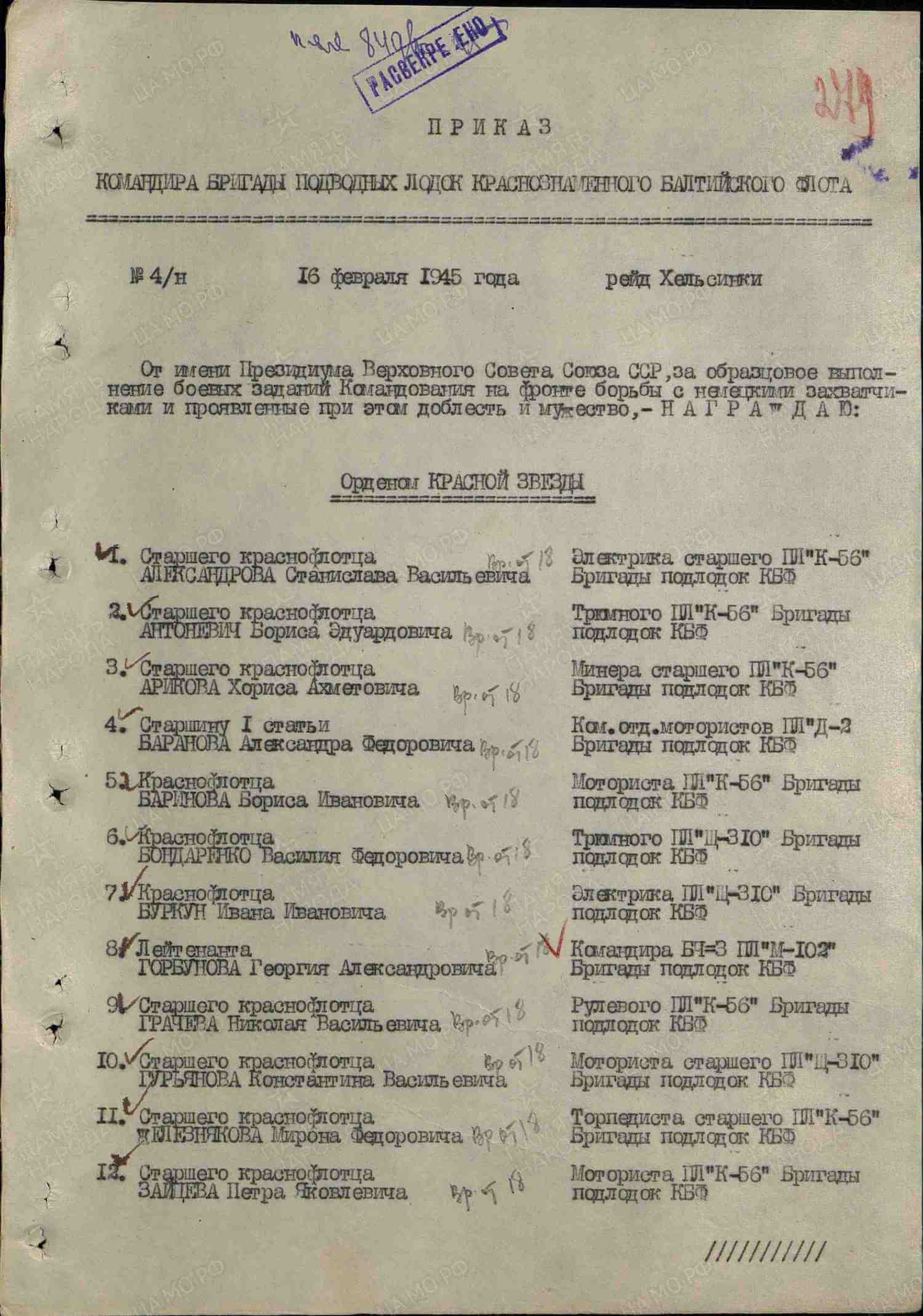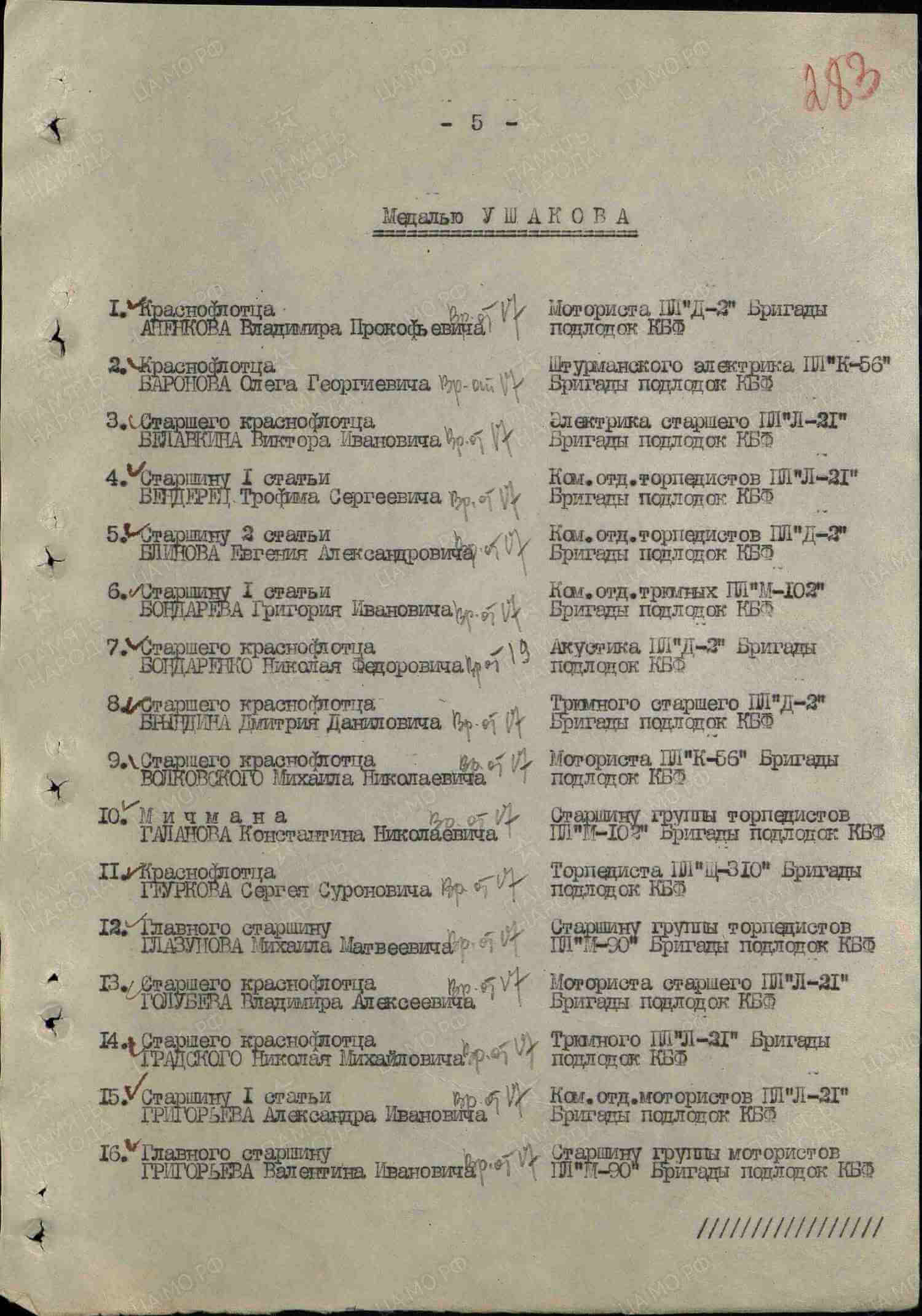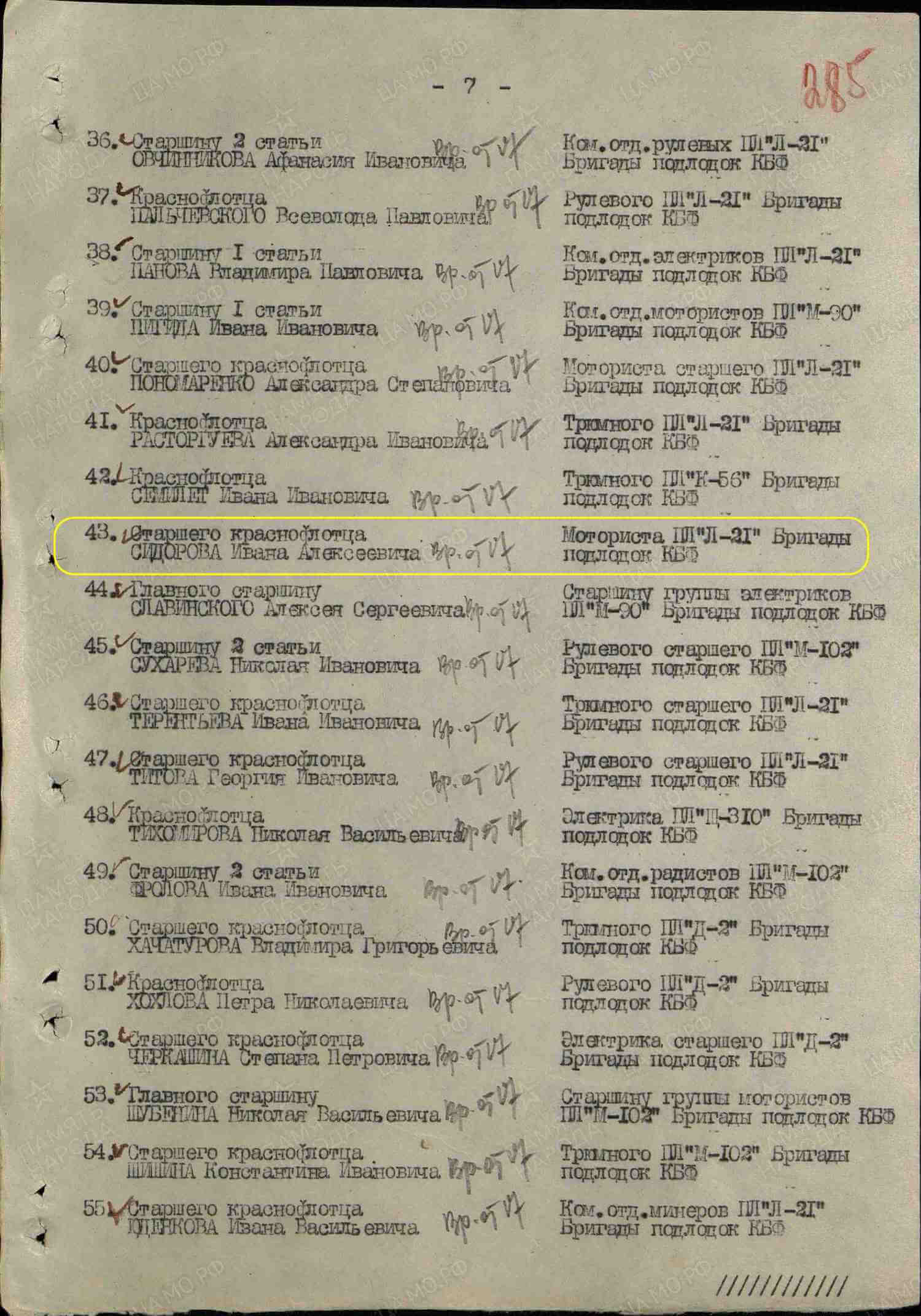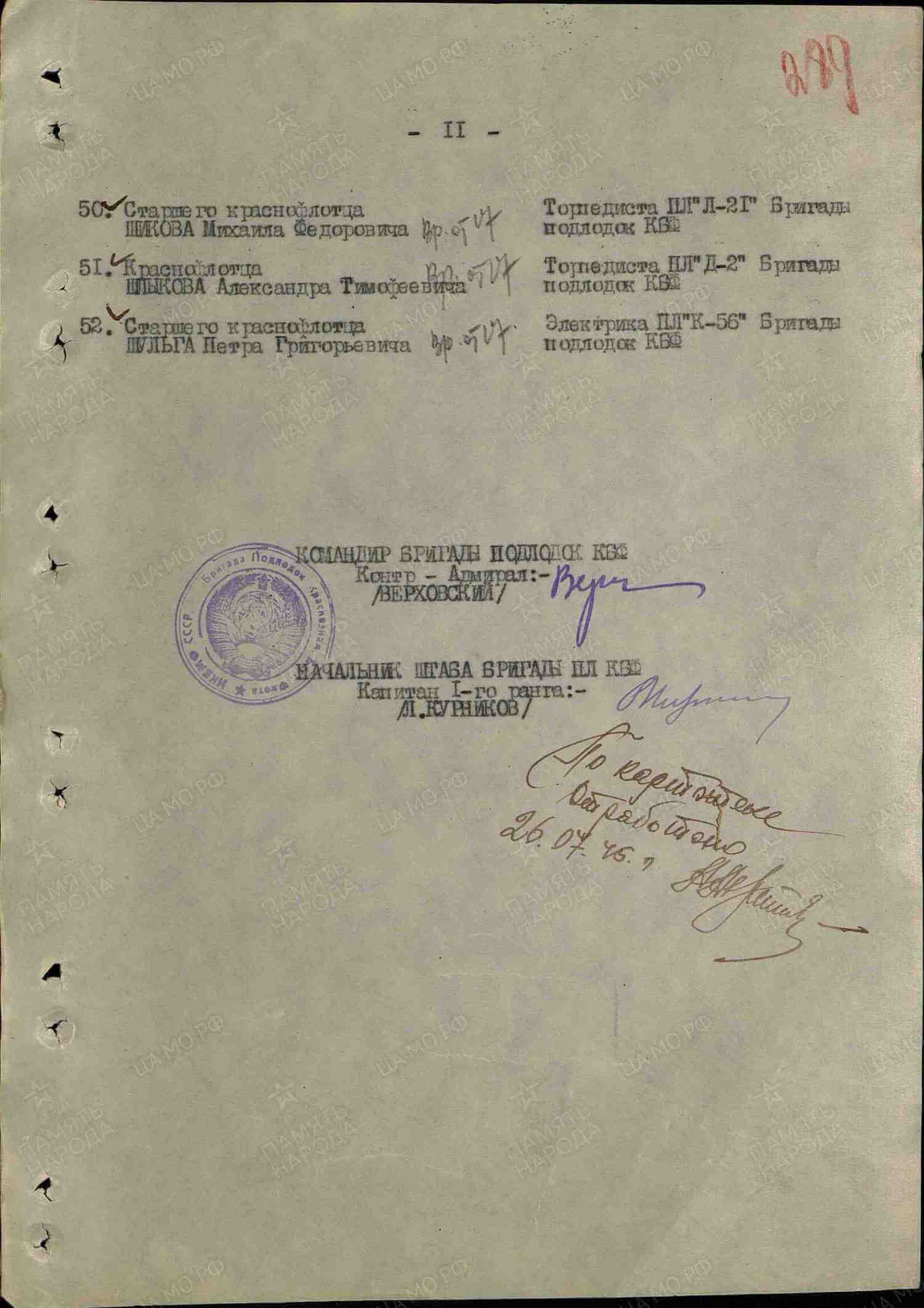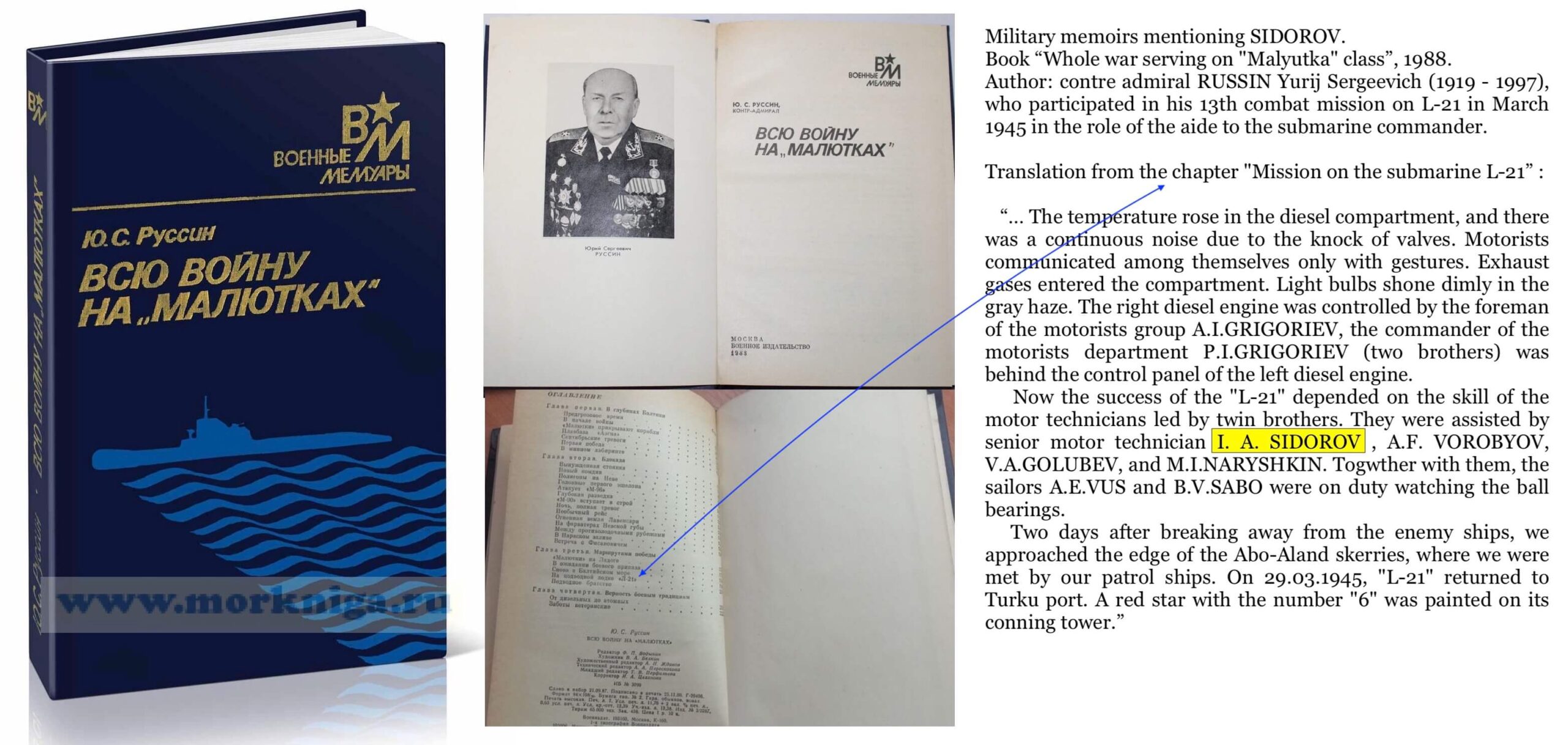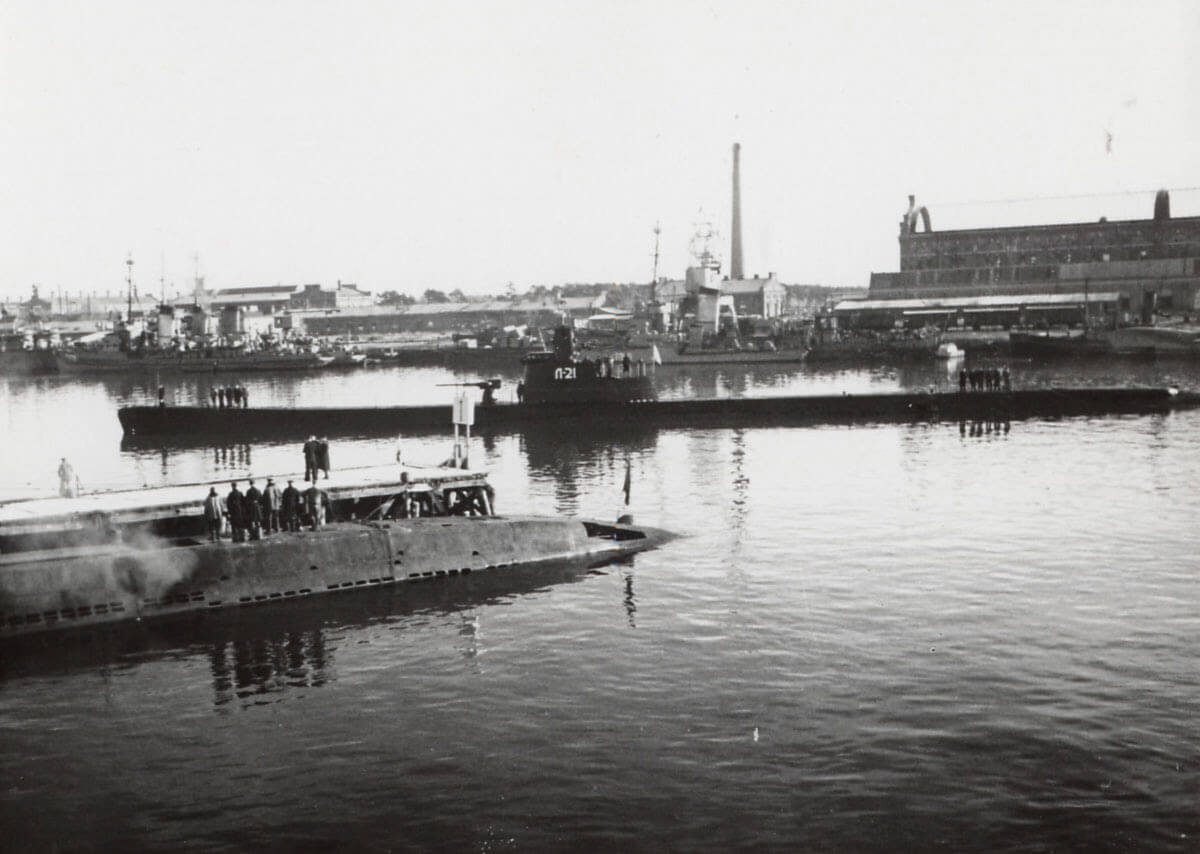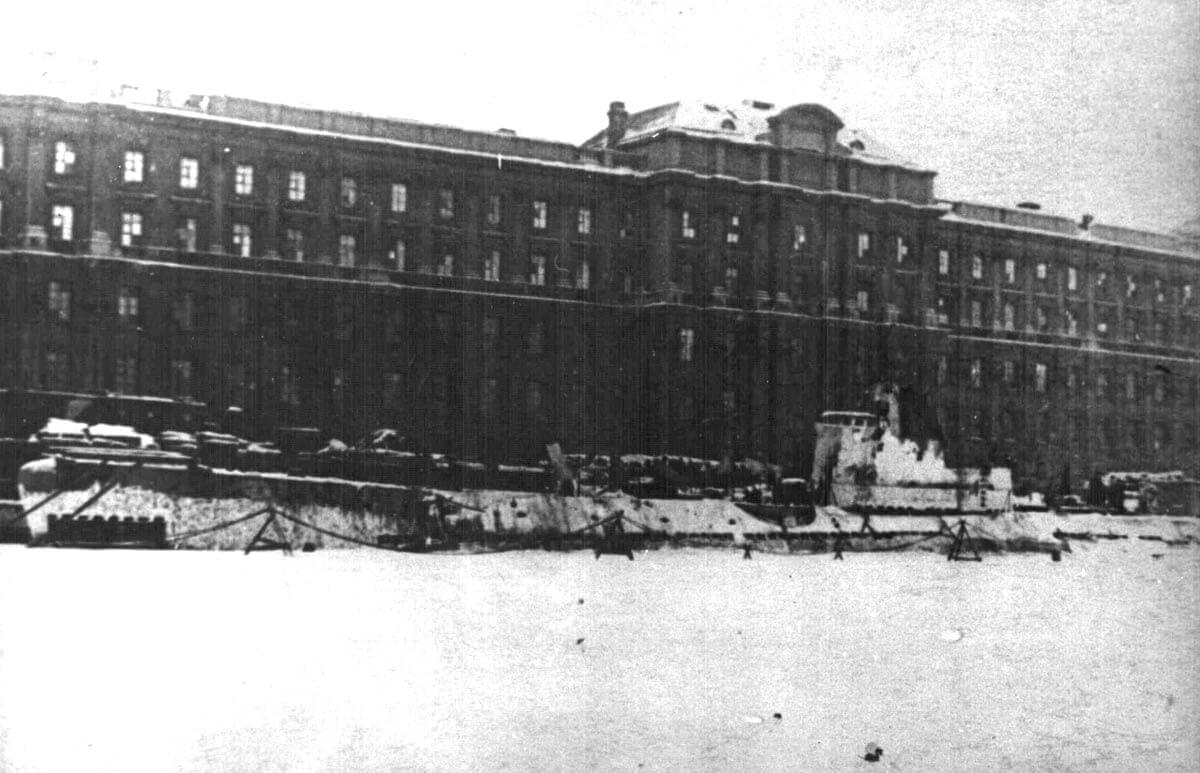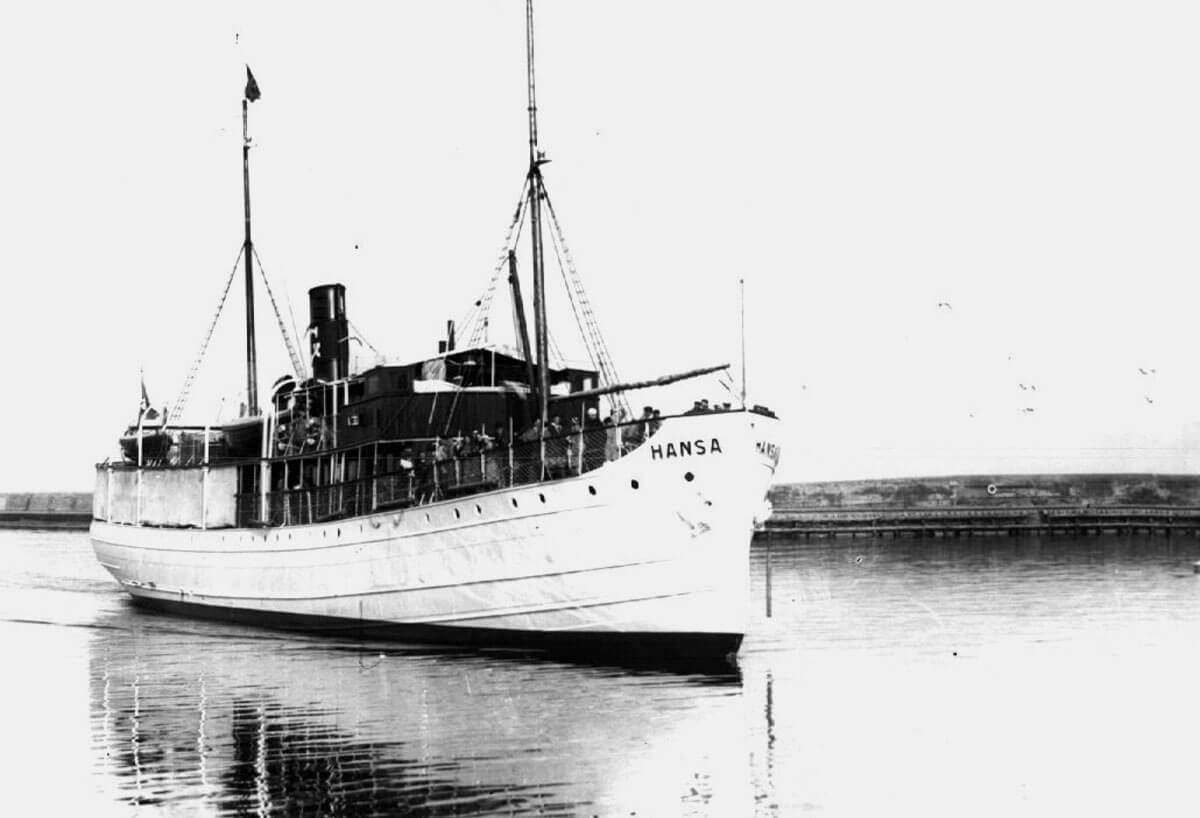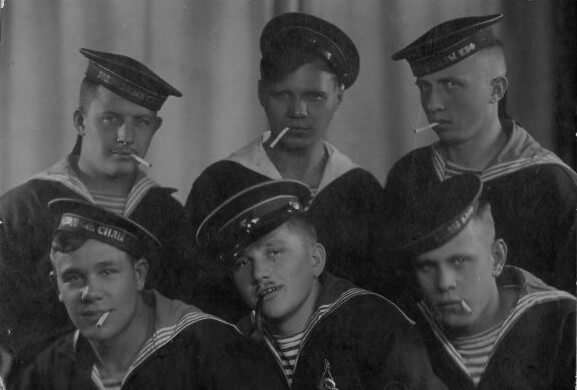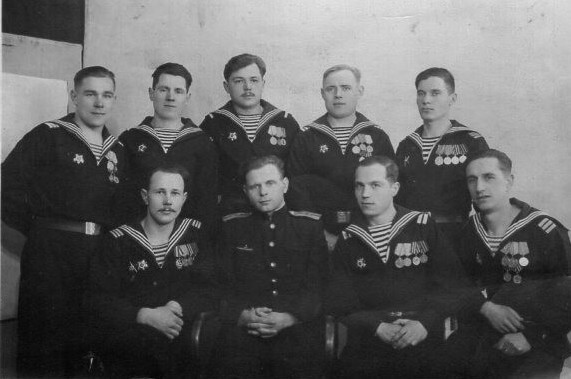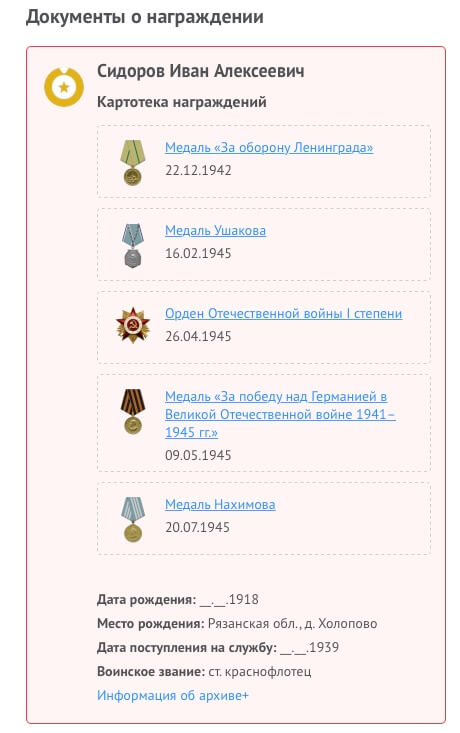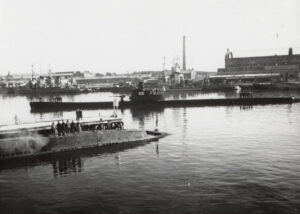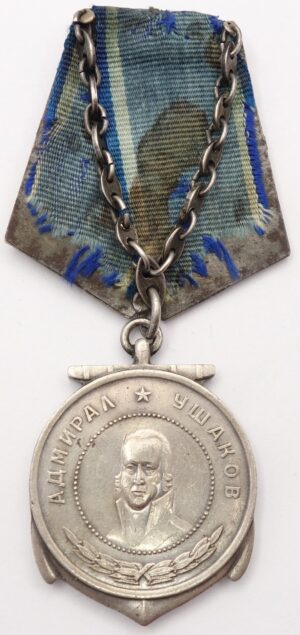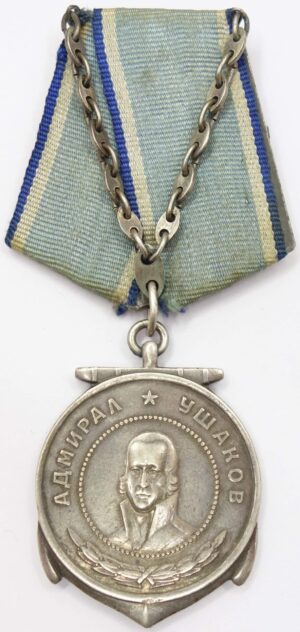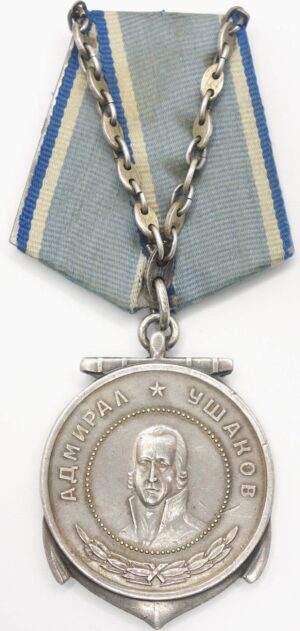Description
Soviet Medal of Ushakov #1526 with Campaign Medals
Awarded to engine mechanic Ivan Alekseevich Sidorov (Иван Алексеевич Сидоров) on the L-21 submarine
For excellently operating the right diesel engine of the submarine and ensuring its impeccable combat missions against the German invaders which resulted in the sinking of an enemy transport ship and laying a mine field
The L-21 was one of the most successful Soviet submarines with 9 ships being sunk among which the German U-367 submarine
The medal comes with a Certificate of Authenticity by Paul McDaniel and it is rated a 7.5 out of 10
This lot consists of the following items:
Medal of Ushakov #1526
Made of solid silver. Measures 35.61 mm in width, 48.50 mm in height including its eyelet and weighs 31.5 grams without its suspension. Featuring admiral Ushakov surrounded by 84 ‘pearls’. The serial number, “2539”, is located on the reverse of the medal. The minimum known serial number is 9 and the maximum 15704.
This Medal of Ushakov is in an excellent, well above average condition. There are relatively few dings and scratches and the higher laying parts show light wear only and the details on Ushakov’s face remained crisp. Both sides show an appealing even dark patina and its connection ring has not been cut. The silver chains hanging diagonally on the suspension are original and without repairs.
Scarce piece awarded to a submariner on the L-21. One of the most successful submarines of the Soviet Fleet!
Medal of Nakhimov (COPY!)
Decent copy made of brass. This medal bar came with an empty slot where the medal of Nakhimov used to be. For display purposes we attached a copy of the Medal for Nakhimov. On request we can put the Ushakov Medal on a single suspension with its original chain.
Medal for the Defence of Leningrad (early ‘Short Horizon’ variation)
Made of gold plated brass. Measures 32.22 mm in width, 37.81 mm in height including its eyelet and weighs 17.0 grams without its suspension.
In good overall condition with a fair amount of gold plating still present and most details still visible.
Medal for the Victory over Germany
Made of gold plated brass. Measures 32.38 mm in width, 37.32 mm in height including its eyelet and weighs 17.8 grams without its suspension.
In excellent condition with most gold plating still present and its details crisp.
Medal for the Capture of Königsberg
Made of gold plated brass. Measures 32.16 mm in width, 37.02 mm in height including its eyelet and weighs 17.3 grams without its suspension.
In excellent condition with most gold plating still present and its details crisp.
Brief, concrete description of his feat of arms:
“He exhibited exceptional endurance and resilience during both the period of preparation for the combat mission and the combat mission against the German invaders on the submarine “L-21”. He excellently operated his battle station – the right diesel engine of the submarine – and ensured its impeccable operations. On many occasions, he worked two shifts in a row and still executed all his tasks properly, which ensured accomplishment of the combat objectives. In this combat tour, the submarine sunk an enemy transport and laid a mine field on the enemy sea transport routes.
He deserves a state award – “USHAKOV” medal.”
The full translation of the citation can be read here
Short excerpt of the accomplishments of the L-21:
Completed in 1940.
On 21.05.1942, it was sunk by German artillery barrage while at the dock. The submarine half-suck, but was later raised and repaired.
3 Combat tours (68 days):
10.11.1944 – 26.11.1944
28.11.1944 – 26.12.1944
05.03.1945 – 29.03.1945
7 torpedo attack (21 torpedoes used).
Plus 2 torpedoes were lost due to unsanctioned release.
Torpedo attacks results:
24.11.1944 transport ship «Hansa» (tonnage 493 tons).
23.03.1945 patrol boat «V-2022».
25.03.1945 floating battery LAT-7 «Gretel».
2 mine fields laid (36 mines in total).
Mine fields victims:
22.11.1944 transport «Eichberg» damaged (tonnage 1923 tons).
24.11.1944 patrol boat damaged «Vs-302».
24.11.1944 transport «Elieе» (tonnage 1873 tons).
14.03.1945 torpedo boat «Т-3»
14.03.1945 torpedo boat «Т-5»
15.03.1945 submarine «U-367» killed – most likely a victim of L-21 mine.
10.04.1945 destroyed Z43 heavily damaged.
==============================================================
Combat order issued to L-21 for its mission in Nov-Dec 1944:
Issue date: 27.10.1944 at 12:00.
…
The order to the Submarine L-21.
On 05.11.44, assume the position to the west of the island Bornholm with the purpose conducting independent operations. The waiting area position is 30 miles north of Cape Molenakken with the task of torpedo attacks on convoys, transports, enemy warships and setting up naval mine fields.
4. Attacks on ships in the Swedish territorial waters are FORBIDDEN.
5. Attacks on enemy subamrines during crossings raids and on stationary positions are FORBIDDEN. In all cases of detection of an enemy submarine, L-21 is to evade by diving with going to depth.
6. Report to me by radio: about the changing the sector of patrol, about the amount of fired torpedoes, about accidents preventing accomplishment of the mission and requiring assistance, about returning to the base and the time of arrival to the meeting point. Report on the enemy ship convoys are to be reported by general broadcasts after attacking them.
7. Return to the base: after the expiration of the submarine autonomy, after deplition of torpedoes magazines, or by an order from the command.
Signed by the Second Deputy Commander of the 1st submarine squadron of the Baltic Navy.
Technician Sidorov is also mentioned in the book “Whole war serving on “Malyutka” class”. An inmage of the book can be found in the picture gallery
Book: “Whole war serving on “Malyutka” class”.
ISBN : 5–203–00062-х
1988
Author: contre-admiral RUSSIN Yurij Sergeevich (1919 – 1997), who participated in his 13th combat mission on L-21 in March 1945 in the role of the submarine commander aide.
Translation from the chapter “Mission on the submarine L-21”:
It was extremely difficult to break away from the enemy anti-submarine ships chase. As soon as we turned on again the pumps and motors, the explosions of depth charges would immediately resume. So they were monitoring us constantly. The commander tried to leave the pursuit area in a zigzag, but the low underwater speed did not provide for the effectiveness of maneuvering with variable courses.
We were already for two days straight under water. Every hour the situation in the compartments changed for the worse. It was becoming difficult to breathe, supplies of oxygen and regeneration cartridges were coming to an end, the battery charge had dropped to the limit.
The secretary of the party organisation G.D. ASHOMOK approached the commander. He asked:
– What do we do? What do we say to the crew? Our people are reliable, they will do everything, comrade commander.
– Take your time, friend, I’ll consult with the division commander, with our officers and take a decision, – commander S.S. MOGILEVSKY answered.
Some time later, the commander approached the internal communication speaker and said in a confident voice:
– Now hear this! Now hear this! Commander speaking! Comrades, friends! The enemy is constantly pursuing us. The second day of our stay under water is coming to an end. Battery energy reserves are running out. We are forced to surface. I announce to you the decision approved by the squadron commander: with the onset of darkness, high-pressure air will flush the blast and we will surface in the emergency mode. Utilizing the surprise factor, we will break away from enemy ships.
We were worried about one thing: how would cold diesel engines and shaft bearings would perform? Will they endure the maximum speed without warming up time?
The mechanical engineer and motorists consulted and unanimously answered: – Must endure!
The submarine surfaced at night. The commander and I went out to the bridge and looked around. The sea was calm. The moon shone. In the distance, on the illuminated lunar path, a group of enemy ships lay adrift. There was silence all around. And this silence was broken, like an explosion, by the exhaust of running diesels. The submarine shuddered with its entire hull – both diesel engines were gaining momentum to the maximum, providing the fullest speed.
For some time, the Fascist ships were still remaining motionless. Obviously, the surfacing of the “L-21” was unexpected for them. But the roar of diesel engines alarmed the Nazis. They rushed in pursuit, firing indiscriminately their artillery and machine-guns, flares began to popup in the air one after another. However, “L-21” sailed further and further north. Soon she was out of reach of fire and lighting flares of the enemy.
The temperature rose in the diesel compartment, and there was a continuous noise due to the knock of valves. Motorists communicated among themselves only with gestures. Exhaust gases entered the compartment. Light bulbs shone dimly in the gray haze. The right diesel engine was controlled by the foreman of the motorists group A.I.GRIGORIEV, the commander of the motorists department P.I.GRIGORIEV (two brothers) was behind the control panel of the left diesel engine.
Now the success of the “L-21” depended on the skill of the motor technicians led by twin brothers. They were assisted by senior motor technician I.A. SIDOROV, A.F. VOROBYOV, V.A. GOLUBEV, and M.I. NARYSHKIN. Together with them, the sailors A.E. VUS and B.V. SABO were on duty watching the ball bearings.
Two days after breaking away from the enemy ships, we approached the edge of the Abo-Aland skerries, where we were met by our patrol ships. On 29.03.1945, “L-21” returned to Turku port. A red star with the number “6” was painted on its conning tower.
More information on Sidorov can be found here
Also included in the picture gallery are digital pictures of the L-21 crew members, the Swedish ship HANSA sunk by L-21 on 24 Nov 1944 and of the L-21 itself
Please contact us with questions
